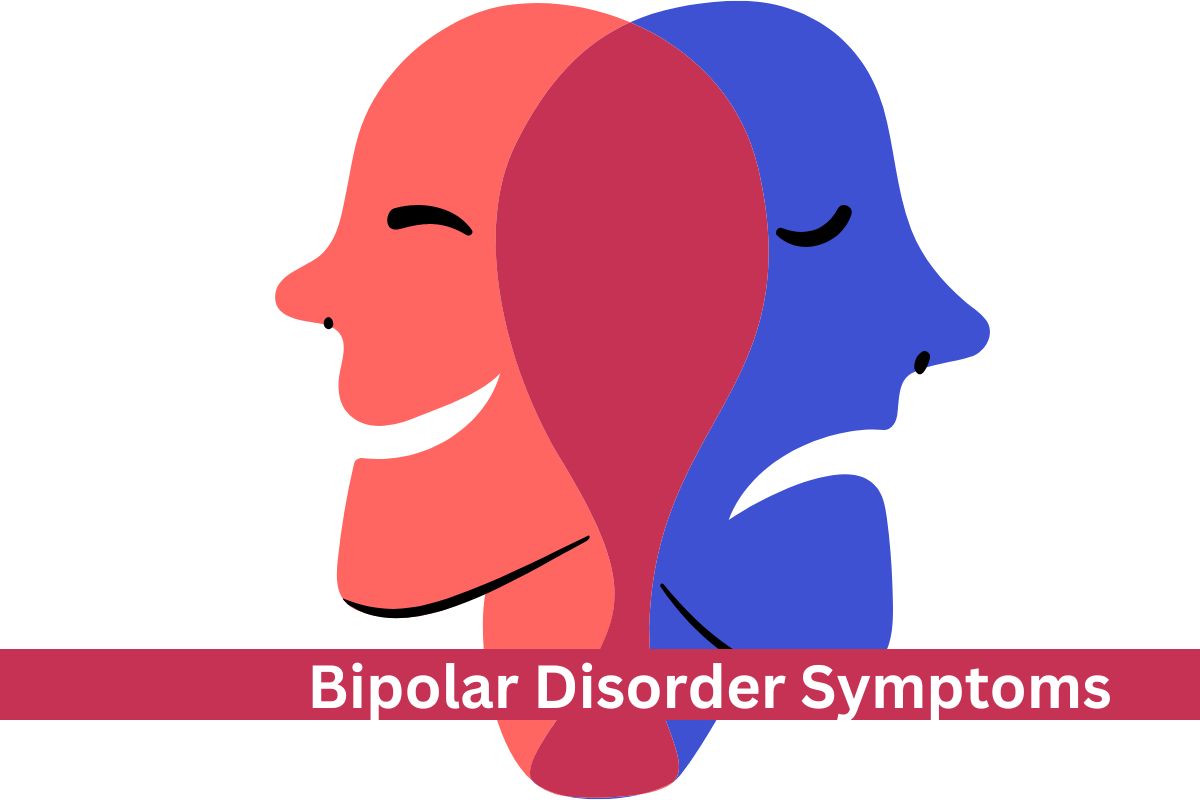What Is Bipolar Disorder? What Are Bipolar Disorder Symptoms?
An individual’s mood, energy level, and capacity for function can alter as a result of bipolar illness, a brain disorder. Bipolar disorder patients go through strong emotional states known as mood episodes, which often happen over discrete intervals of days to weeks. Manic/hypomanic (an abnormally cheerful or angry mood) or depression are the two classifications for these mood episodes (sad mood). Most bipolar patients also have periods of neutral mood. Bipolar disease sufferers can live full and productive lives if given the right treatment.
Even those who do not have bipolar disorder go through mood swings. These mood swings, meanwhile, usually only last a few hours as opposed to days. Furthermore, unlike during mood episodes, these alterations are typically not accompanied by the significant degree of behaviour change or difficulties adjusting to regular activities and social interactions that bipolar illness sufferers exhibit. A person with bipolar disorder may experience difficulties at work or at school, as well as in their relationships with their loved ones.
Three distinct diagnoses fall under the umbrella of bipolar disorder: bipolar I, bipolar II, and cyclothymic disorder.
Eighty to ninety percent of those with bipolar disorder have a family member who also has the condition or is depressed. Stress, irregular sleep patterns, narcotics, and alcohol can all cause mood swings in persons who are already vulnerable. Although the exact brain-based origins of bipolar disorder are unknown, dysregulated brain activity is thought to be caused by a chemical imbalance. 25 years old on average is the onset age.
Anxiety disorders, substance use disorders, and/or attention-deficit/hyperactivity disorder are typically present in people with bipolar I disorder (ADHD). Compared to the general population, those with bipolar I disorder have a much increased risk of suicide.

Bipolar illness patients might experience extreme highs of happiness and vigour as well as extreme lows of melancholy, hopelessness, and sluggishness. Usually, people feel normal in the intervals between those times. Bipolar disorder is so named because the highs and lows can be compared to two “poles” of emotion.
Also Read:
Does Different Bipolar Disorders Exist?
Bipolar disorder comes in a variety of forms, including:
Bipolar I disorder: With bipolar I disorder, your conduct is incredibly unstable and you experience manic “up” phases that last at least a week or are so severe that you require medical attention. Extreme “down” episodes that last at least two weeks are also typical.
Bipolar II disorder: Although the highs and lows are irregular with bipolar II conditions, they are not as severe as they are with bipolar I.
Cyclothymic disorder: This type includes manic and depressed episodes that span at least two years in adults or one year in children and adolescents. Compared to bipolar disorder I or II, the symptoms are less severe.
Rapid Cycling: Rapid cycling is a term used to characterise the course of the illness in people with bipolar I or II disorder; it is not a kind of bipolar disorder. It is applicable when there are four or more mood episodes within a year. This sort of illness course affects women more frequently than males, and it can appear and disappear at any point during the course of bipolar disorder. Rapid cycling has a higher risk of suicidal thoughts or actions and is primarily fueled by depression.
Misuse of drugs or alcohol can increase the number of episodes in people with bipolar disorder of any kind. A dual diagnosis, or having both bipolar disorder and alcohol use disorder, necessitates assistance from a specialist who can handle both problems.
“Unspecified” or “other specified” bipolar disorder: The terms “unspecified” or “other specified” bipolar disorder (previously known as “bipolar disorder not otherwise specified”) are now used to refer to conditions in which a person only exhibits a small number of the mood and energy symptoms that characterise a manic or hypomanic episode, or in which the symptoms may not last long enough to be considered as distinct “episodes.”

What Are the Symptoms of Bipolar Disorder? (Bipolar Disorder Symptoms 2022)
The extreme mood swings of bipolar disorder do not occur in a predictable way. Before shifting to the opposite mood, a person may experience the same mood state (depressed or manic) multiple times. These episodes can take place over the course of several weeks, months, or even years.
The degree to which it worsens varies from person to person and can also alter over time, worsening or lessening.
Mania symptoms (“the highs”):
- Making grand and unrealistic plans
- Rapid speech and poor concentration
- Excessive happiness, hopefulness, and excitement
- Showing poor judgment
- Less of an appetite
- Sudden changes from being joyful to being irritable, angry, and hostile
- Restlessness
- Increased energy and less need for sleep
- Unusually high sex drive
- Becoming more impulsive
- Less need for sleep
- A larger sense of self-confidence and well-being
- Being easily distracted
- Drug and alcohol abuse

During depressive periods (“the lows”), a person with bipolar disorder may have:
- Inability to feel pleasure
- Sadness
- Feelings of hopelessness or worthlessness
- Loss of energy
- Not enjoying things they once liked
- Trouble concentrating
- Forgetfulness
- Talking slowly
- Less of a sex drive
- Uncontrollable crying
- Trouble making decisions
- Irritability
- Insomnia
- Appetite changes that make you lose or gain weight
- Thoughts of death or suicide
- Attempting suicide
- Needing more sleep

